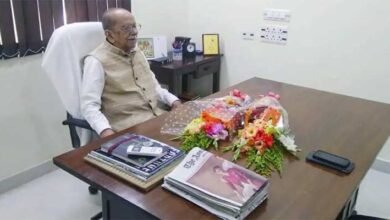Assam: RGU organises webinar on ‘Love to See, Don’t Understand: Crisis in Education of Art’

Guwahati- A webinar on ‘Love to See, Don’t Understand: Crisis in Education of Art’ was held by Royal Global University with eminent contemporary artist Mr.Amitabh Sengupta on 15 June 2020 from 2M – 3PM. He was joined in his deliberations by Prof.(Dr.) S.P.Singh, Vice Chancellor, Ar. Anita P. Yammiyavar, Principal & Dean, Royal School of Fine Arts along with 300+ faculty, staff and students of RGU as well as from across India.
Prof. Singh, influenced by the KARMOTSAV-86 held in his college in Lucknow, was mesmerized by the art and architecture complimented by the nursing in his youth with stories from his grandmother, has paintings which bespoke of the recollection of the tales.
He further rues the fact that if time had permitted, he would have definitely taken up it as a subject, opportunity students’ get these days. Now, as a Vice Chancellor, he ensures with passion that every department is an array of colours of subjects and extra-curricular activities, empowering and giving an opportunity to students to express in fields they envisage themselves in.
Charles Auguste had said ‘everyone is an artist’ and every person has a child in Him, who must be treasured for virgin expressions in art. Prof.Singh also spoke on Ferit Orhan Pamuk, Nobel Laureate in literature who had chronicled Turkey in his book, Istanbul, and the graphic details he wrote, painted the clear historical picture of Turkey in his mind. For him, any person from any strata of society can be a painter of colours or words.
Mr. Sengupta, taking the cue from Prof. Singh, deliberated on the history of art and art forms from ages as chronicled in caves, temples, museums, etc,. He said that painting is an important form in the visual arts, bringing in elements such as drawing, gesture, composition, narration or abstraction. Paintings can be naturalistic and representational, photographic, abstract, narrative, symbolistic, expressionism, or political in nature.
A portion of the history of painting in both Eastern and Western art is dominated by religious art. Examples of this kind of painting range from artwork depicting mythological figures on pottery, to Biblical scenes Sistine Chapel ceiling, to scenes from the life of Buddha or other images of Eastern religious origin.
In art, the term painting describes both the act and the result of the action. The support for paintings includes such surfaces as walls, paper, canvas, wood, glass, lacquer, pottery, leaf, copper and concrete, and the painting may incorporate multiple other materials including sand, clay, paper, plaster, gold leaf, as well as objects. Art was predominantly influenced by Britishers and Nigeria opened his eyes to ignoring local art in expressions.
He stated that anything can be art and art cannot be confined to institutions but should be let out in open areas like cafeterias, museums, temporary exhibitions. Monalisa is a testament of time of theoretical discourse which created a myth, a turning point in art history.
He advised that in order to experience true art, it must be a replica of Nature and society as it is. He pointed out that to mark a civilization; one must observe what people do in their leisure time.









